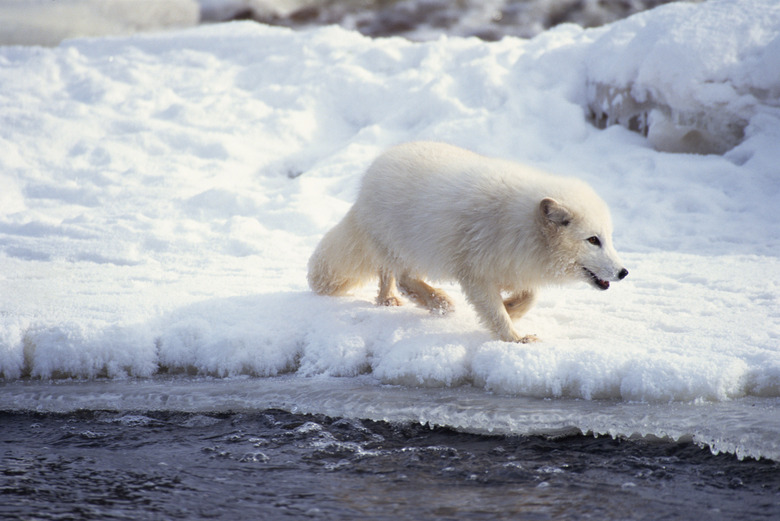Plants In The Arctic Ocean
The Arctic Ocean is the smallest ocean in the world and centers on the North Pole. In the summers, there is endless daylight with a sun that doesn't set. In the winter the sun doesn't rise for months at a time. Very few Arctic Ocean animals and plants are able to survive in this harsh environment. But despite freezing temperatures and limited light, there are plants that are able to overcome these obstacles and survive. Arctic seaweed forests, arctic moss and phytoplankton are some of the most common plants you will find in the Arctic Ocean.
Arctic Seaweed Forests
Arctic Seaweed Forests
While there may not be forests on land in the Arctic, there is a type of forest underwater. Kelp is a type of underwater seaweed that forms forests along the ocean floor. Indigenous people, researchers and polar explorers have all observed kelp forests in the Arctic. They usually grow on rocky coasts, and the longest arctic kelp recorded in Canada was fifty feet long!
Kelp is able to survive the freezing temperatures and long periods of darkness that occur in the Arctic. Kelp creates a habitat for Arctic Ocean animals by softening the ocean waves and shading light. This also protects coastlines during storms, which can reduce coastal erosion in the Arctic. More than 350 different species are known to live on a single kelp, and many birds and fish depend on kelp forests for survival. As ocean waters warm with climate change, kelp forests may shift farther north. Melting glaciers will negatively impact the kelp forests as runoff brings more sediment into the ocean. This will block light from kelp forests and limit their growth.
Arctic Moss
Arctic Moss
Though we normally think of moss as growing on land, there is also a type of moss that grows underwater. Arctic moss, or Calliergon giganteum, is an aquatic plan found on the bottom of tundra lake beds and in bogs. Like other mosses, arctic moss has tiny rootlets called rhizoids rather than normal roots, and these mosses don't have wood stems. Their tiny leaves are usually only one cell thick. Each plant is only able to grow one centimeter per year, and the shoots are able to live seven to nine years.
Living in a harsh, cold climate has its challenges, and arctic moss has adapted well. When arctic moss does grow underwater, it is protected from the strong freezing winds of the arctic tundra. Whenever the moss is not growing, it stores nutrients for the following year. This means that the moss can grow leaves more quickly the following spring once it is ready.
Phytoplankton in the Arctic Ocean
Phytoplankton in the Arctic Ocean
Phytoplankton are a combination of plants (in this case algae) and bacteria. Similar to plants growing on land, phytoplankton uses nutrients in the water and sunlight to produce its own food. Sea ice melts in the Arctic each spring, leaving behind a layer of freshwater on the ocean surface that is full of nutrients. During this time of year, sunlight also easily reaches the Arctic Ocean waters and gives an enormous amount of energy to phytoplankton. This combination of nutrients and sunlight allows the phytoplankton to bloom. Sometimes these blooms can even be seen from space!
Phytoplankton are the base of the Arctic food chain, so these blooms provide important food and energy to the other animals in the ocean. Phytoplankton blooms feed tiny, shrimp-like animals called krill. Krill are eaten by seabirds, seals, whales and other Arctic Ocean animals. Without phytoplankton, the entire Arctic Ocean ecosystem could fall apart.
Cite This Article
MLA
Taylor, Lindsey. "Plants In The Arctic Ocean" sciencing.com, https://www.sciencing.com/plants-arctic-ocean-6951567/. 1 December 2021.
APA
Taylor, Lindsey. (2021, December 1). Plants In The Arctic Ocean. sciencing.com. Retrieved from https://www.sciencing.com/plants-arctic-ocean-6951567/
Chicago
Taylor, Lindsey. Plants In The Arctic Ocean last modified August 30, 2022. https://www.sciencing.com/plants-arctic-ocean-6951567/
